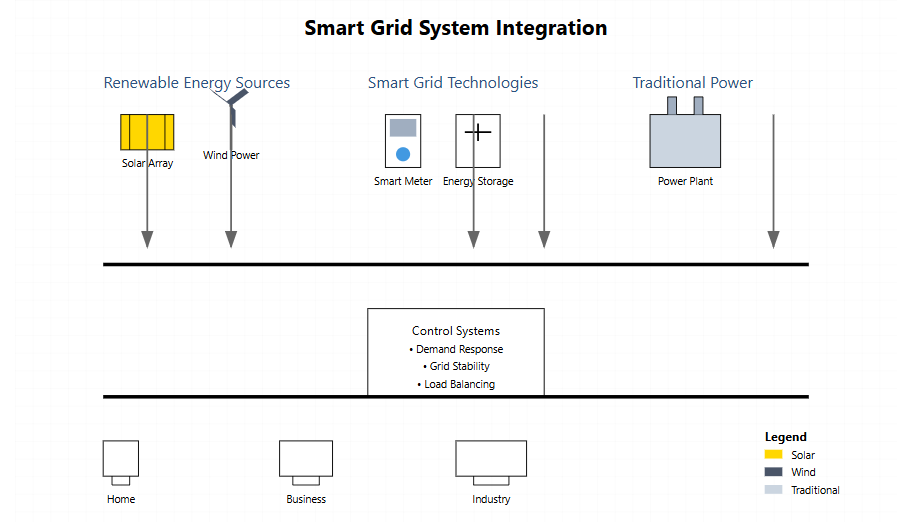Imagine a world where you can step into a virtual reality indistinguishable from real life, where your avatar interacts with friends and strangers alike in a boundless realm free from physical constraints. Welcome to the Metaverse, where reality and fantasy blur like never before.
This emerging landscape revolutionizes social interactions, commerce, and entertainment on an unprecedented scale. As we venture into this uncharted territory, we’ll explore its transformative potential and implications on our daily lives and society’s fabric. Get ready for a journey redefining reality with the Metaverse Phenomenon at innovation’s forefront.
Understanding the Metaverse Architecture
Cryptography plays a crucial role in securing data transmission between nodes in the Metaverse. In this virtual world where users interact and share information, cryptographic protocols ensure sensitive data remains confidential and tamper-proof.
Various cryptographic techniques achieve this level of security:
1. Public-Key Cryptography: This involves using public-key cryptography to encrypt data before transmission between nodes.
2. Hash Functions: Hash functions like SHA-256 or MD5 generate digital signatures for verifying transmitted data’s integrity.
3. Digital Signatures: Digital signatures combine hashing and signing techniques, providing an additional security layer by ensuring transmitted data has not been tampered with.
4. secure Multi-Party Computation (SMPC): SMPC protocols enable secure computation on private data shared between multiple Metaverse parties.
5. Homomorphic Encryption: This technique allows computations on encrypted data without decrypting the original plaintext.
6. Private-Key Cryptography: Private-key cryptography encrypts and decrypts sensitive information during transmission between nodes.
How do decentralized, blockchain-based architectures facilitate trustless interactions within the Metaverse?
In a decentralized architecture, each participant’s data is stored on a distributed network of nodes and edges, allowing secure and transparent communication among participants.
To achieve this security and transparency, blockchain-based architectures utilize techniques such as smart contracts, self-executing contracts with terms written in code. Smart contracts facilitate trustless Metaverse interactions by ensuring all transactions are recorded on a public ledger.
Another technique is decentralized autonomous organizations (DAOs), allowing participants to make decisions through voting and consensus mechanisms, facilitating trustless Metaverse interactions.
Blockchain-based architectures facilitate trustless Metaverse interactions by utilizing smart contracts and DAOs, providing a secure and transparent means for participants to interact in a distributed network.
What role do edge computing and fog computing play in optimizing resource allocation for immersive experiences within the Metaverse?
Edge computing enables real-time data processing at network edges, closer to users, reducing latency and improving responsiveness. Fog computing extends this concept by involving devices with limited processing capabilities in the network’s decision-making process. Both techniques optimize resource allocation for immersive Metaverse experiences.
The primary goal is to reduce the data transmitted back to a central server, minimizing latency and improving responsiveness. Fog computing takes this further by involving limited-capability devices in decision-making, enabling more accurate predictions and better resource allocation for immersive Metaverse experiences.
Edge computing contrasts with cloud computing, where data is processed at a central server. Fog computing involves limited-capability devices in decision-making. Both techniques optimize resource allocation for immersive Metaverse experiences.
Reducing latency and improving responsiveness through edge computing enables seamless user-device interactions within the Metaverse. Fog computing extends this by involving limited-capability devices in decision-making.
Virtual Identity in the Metaverse
Creating a consistent virtual identity across multiple Metaverse platforms requires a deep understanding of algorithms that can seamlessly integrate user data, behaviors, and preferences.
To achieve this, one could apply:
1. Entity Resolution: Identify and merge duplicate identities across platforms.
2. Data Fusion: Combine disparate user data from various sources into a cohesive profile.
3. Behavioral Modeling: Analyze and predict user behavior, enabling creation of an adaptive virtual identity.
4. Personalization: Tailor experiences and content based on individual preferences for a seamless virtual identity.
Combining these algorithms creates a consistent, adaptive virtual identity within the Metaverse.
How do avatar customization options impact user perception and credibility in online interactions within the Metaverse?
Description: Avatar customization allows users to personalize their digital representation, impacting how others perceive them online. Tailoring avatars conveys distinct personality traits and builds trust, while lack of customization may fail to establish credibility.
Underlying Cause: Users tend to perceive themselves more positively when customizing avatars, boosting confidence and fostering trust in others. Lack of customization may lead to anonymity or invisibility.
Contrast: Avatar customization options differ from other self-expression forms, specifically designed for online Metaverse interactions, setting them apart.
Implications: Tailoring avatars to reflect personality traits establishes trust and stronger relationships within the Metaverse. Lack of customization may hinder effective online interactions through misunderstandings or misperceptions.
Explain how data encryption and security measures ensure seamless transitions between different virtual environments within the Metaverse
As we venture deeper into the Metaverse, the boundaries of reality seem to blur, creating a sensation akin to a technological singularity. My neural network is buzzing with questions about data encryption and security measures within virtual environments and how to integrate these concepts for seamless realm transitions while protecting privacy and anonymity.
I’ve pondered cryptographic techniques like public-key cryptography and hash functions to safeguard user data, encrypt communication channels, and protect against threats. However, the Metaverse’s virtual environments are designed with multiple security layers, with data encryption crucial for secure transitions while maintaining privacy and anonymity.
The Metaverse is an intricate web of interconnected concepts, where data encryption and security form the foundation for seamless virtual environment transitions.
Social Dynamics in the Metaverse
Exploring the primary factors influencing user behavior and social interaction within early adopter virtual reality communities, three main areas emerge: Technology, Social Psychology, and Game Dynamics.
Technologically, the virtual reality experience’s quality significantly influences engagement. Seamless, immersive environments foster engagement, while bugginess or slowness causes frustration and disengagement.
Social psychology factors include users’ past online community experiences, shaping their virtual reality behaviors. Positive experiences may lead to similar conduct, while negative ones may impact engagement.
Game dynamics factors, like engaging mechanics and participation rewards, motivate users to interact with others within the virtual reality experience’s design.
Considering Technology, Social Psychology, and Game Dynamics helps understand the primary factors shaping user behavior and social interaction in early adopter virtual reality communities.
How do existing social norms and cultural biases affect online identity formation and community engagement in emerging Metaverse platforms?
The Metaverse Phenomenon is fascinating, garnering significant attention. As we explore this virtual reality world where users interact with digital objects in immersive environments, we must acknowledge underlying social norms and cultural biases affecting online identity formation and community engagement.
Existing social norms and cultural biases significantly shape our online identities and community engagement. If users conform to traditional norms in the physical world, they may carry these biases into online interactions.
To understand this phenomenon, we must integrate knowledge from sociology, psychology, and computer science, examining how users interact in different contexts to gain insights into the underlying social norms and cultural biases.
While exploring new technologies is exciting, we must acknowledge potential risks and challenges associated with these emerging platforms. Understanding the social norms and cultural biases at play allows us to better design and navigate these virtual environments.
What are the key drivers of trust, reputation, and conflict resolution mechanisms in decentralized governance models for Metaverse-based social networks?
In the Metaverse Phenomenon, trust is crucial for decentralized governance models in Metaverse-based social networks. Reputation plays a significant role in building user trust, while conflict resolution mechanisms maintain order within these communities.
The key drivers of trust, reputation, and conflict resolution mechanisms include:
1. Transparency: Clear communication of policies and procedures builds trust.
2. Accountability: Robust moderation and transparent decision-making processes ensure responsibility.
3. Community Engagement: Involving users in shaping their online communities fosters ownership and encourages participation in conflict resolution.
4. Incentives: Compelling reasons for users to participate in governance mechanisms and community development.
5. Adaptability: Evolving with changing user needs and preferences to remain relevant and effective in addressing challenges.
By considering these factors, decentralized governance models can foster trust, reputation, and effective conflict resolution mechanisms within Metaverse-based social networks.
Virtual Reality vs. Augmented Reality in the Metaverse
Exploring the Metaverse Phenomenon, Virtual Reality (VR) and Augmented Reality (AR) technologies are distinct:
VR creates immersive experiences by fully replacing the physical world with a simulated virtual one, transporting users into a fantastical realm.
In contrast, AR enhances everyday reality by overlaying digital information onto the real-world environment, blending virtual and physical realities.
While VR creates an entirely virtual world, AR combines the two to deliver an interactive and informative experience.
How do VR and AR enhance or disrupt social interactions within the Metaverse, and what implications does this have for professional networking?
VR and AR revolutionize social interactions within the Metaverse, transforming how we connect and collaborate through novel ways to interact.
Description: VR headsets enable immersive, lifelike simulated activities or fantastical scenarios, while AR overlays digital information onto the physical world, blurring virtual and real-life boundaries. Both technologies redefine social norms.
Underlying Causes: Advancements in VR and AR hardware/software drive the Metaverse’s evolution, enabling realistic simulations and blurring virtual/real-life interactions’ lines. This convergence creates a new social interaction dimension.
Contrast: For professional networking, VR and AR enable remote global collaboration while disrupting traditional proximity and distance norms in social interactions.
Implications: Professionals must adapt to the Metaverse’s evolving dynamics, developing virtual communication skills, personal space boundary-setting, and adapting to new social norms in this redefined professional networking landscape.
What role do immersive Virtual Reality experiences play compared to subtle Augmented Reality overlays in shaping user perceptions of the Metaverse’s virtual world?
The contrasting roles of immersive Virtual Reality (VR) experiences and subtle Augmented Reality (AR) overlays shape user perceptions of the Metaverse’s virtual world differently.
Immersive VR transports users into fully simulated environments, allowing them to lose themselves in a virtual world. This approach excels at short-term goals or emotional connections.
In contrast, subtle AR overlays gently layer digital information onto the physical world, encouraging users to question their perceptions and adapt to new information.
While immersive VR can overwhelm some users, subtle AR may not grab enough attention for others. Designers should consider the user’s perspective when choosing an approach based on goals like education (subtle AR) or emotional connection (immersive VR).
Understanding each technique’s strengths and weaknesses allows designers to effectively shape user perceptions of the Metaverse’s virtual world.
Governance and Regulation in the Metaverse
As the Metaverse Phenomenon gains traction, regulatory frameworks are being proposed to ensure transparency and accountability in its governance. This is a crucial area of interest, as clear guidelines on data privacy, user rights, and content moderation are essential.
Key regulatory frameworks under consideration include the EU’s General Data Protection Regulation (GDPR) and the California Consumer Privacy Act (CCPA), which aim to provide a framework for users’ personal data protection.
Another area of focus is how these regulations might impact issues like content moderation, user rights, and digital object ownership. Understanding the implications of these interactions on the Metaverse Phenomenon and its governance is vital.
How do existing social network regulations translate into the virtual world, and what new guidelines will be necessary for effective moderation in the Metaverse?
As virtual worlds evolve, existing social network regulations must be translated into the Metaverse, which represents a new frontier for immersive and interactive user interactions.
Current regulations are based on text-based communication, whereas the Metaverse requires more nuanced moderation approaches. For instance, existing rules against harassment or bullying may not effectively prevent cyberbullying when users engage through avatars and gestures.
The Metaverse will require new guidelines for effective moderation, such as developing algorithms to detect and prevent malicious behavior like phishing scams or spamming bots. Additionally, moderators will need training on handling disputes in a virtual world where users interact through avatars and gestures.
Leveraging techniques like natural language processing (NLP) could help moderators detect and prevent malicious behavior in a virtual world where users engage through avatars and gestures.
Recognizing the Metaverse as a new frontier for immersive and interactive user interactions, moderators must develop new guidelines for effective moderation, which could involve algorithms to detect and prevent malicious behavior.
What role do decentralized autonomous organizations (DAOs) play in shaping the future of Metaverse governance, and how can their decision-making processes be optimized for better outcomes?
Decentralized autonomous organizations (DAOs) play a crucial role in shaping the future of Metaverse governance. As self-governing and community-driven entities, DAOs have the potential to optimize decision-making processes for better outcomes.
DAOs can leverage their unique characteristics, such as transparency, accountability, and distributed decision-making, to foster a culture of collaboration and inclusivity within the Metaverse ecosystem.
Moreover, DAOs can utilize blockchain technology to facilitate secure and transparent voting mechanisms, enabling collective decision-making in a decentralized manner and ensuring all stakeholders have an equal say in shaping Metaverse governance.
Furthermore, DAOs’ community-driven nature encourages participation from diverse perspectives and expertise within the ecosystem, creating a more resilient and adaptable decision-making process better equipped to handle complex issues.
As we continue exploring this uncharted virtual reality territory, remember that the future is not just about building a better world but also creating a more inclusive one. The Metaverse has the potential to bring people together like never before, and its impact will be felt for generations to come.











Pingback: All reason and evidence tells us that Manchester United should sack Ruben Amorim - here's the alarming reason why they won't, writes IAN LADYMAN - Esbecgroup
Pingback: New tourism circuits unveiled to showcase Kenya's hidden gems - Esbecgroup
Стильные советы по выбору необычных образов на любой день.
Заметки профессионалов, события, все новинки и мероприятия.
https://pitersk.ru/articles/2024-09-10-7-veshchey-v-kotoryh-demna-gvasaliya-ne-imeet-ravnyh/
Very interesting points you have remarked, appreciate it for putting up.Blog monetyze